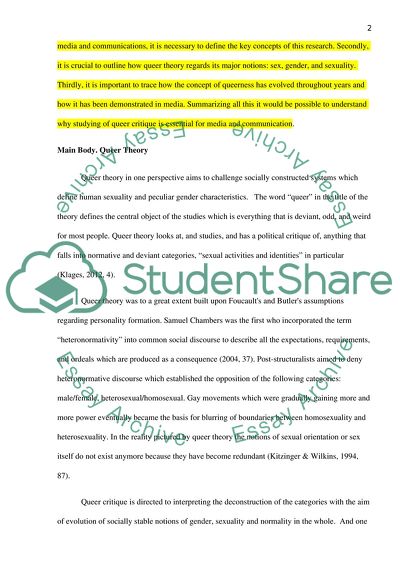Cite this document
(Queer Critique is Essential to the Study of Media and Communications Essay Example | Topics and Well Written Essays - 3000 words, n.d.)
Queer Critique is Essential to the Study of Media and Communications Essay Example | Topics and Well Written Essays - 3000 words. https://studentshare.org/journalism-communication/1868429-queer-critique-is-essential-to-the-study-of-media-and-communications-discuss
Queer Critique is Essential to the Study of Media and Communications Essay Example | Topics and Well Written Essays - 3000 words. https://studentshare.org/journalism-communication/1868429-queer-critique-is-essential-to-the-study-of-media-and-communications-discuss
(Queer Critique Is Essential to the Study of Media and Communications Essay Example | Topics and Well Written Essays - 3000 Words)
Queer Critique Is Essential to the Study of Media and Communications Essay Example | Topics and Well Written Essays - 3000 Words. https://studentshare.org/journalism-communication/1868429-queer-critique-is-essential-to-the-study-of-media-and-communications-discuss.
Queer Critique Is Essential to the Study of Media and Communications Essay Example | Topics and Well Written Essays - 3000 Words. https://studentshare.org/journalism-communication/1868429-queer-critique-is-essential-to-the-study-of-media-and-communications-discuss.
“Queer Critique Is Essential to the Study of Media and Communications Essay Example | Topics and Well Written Essays - 3000 Words”. https://studentshare.org/journalism-communication/1868429-queer-critique-is-essential-to-the-study-of-media-and-communications-discuss.


